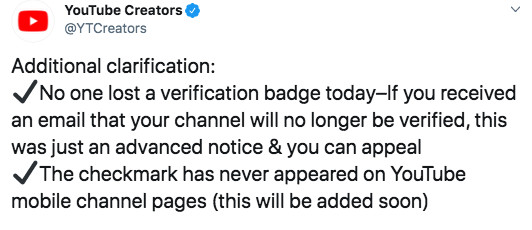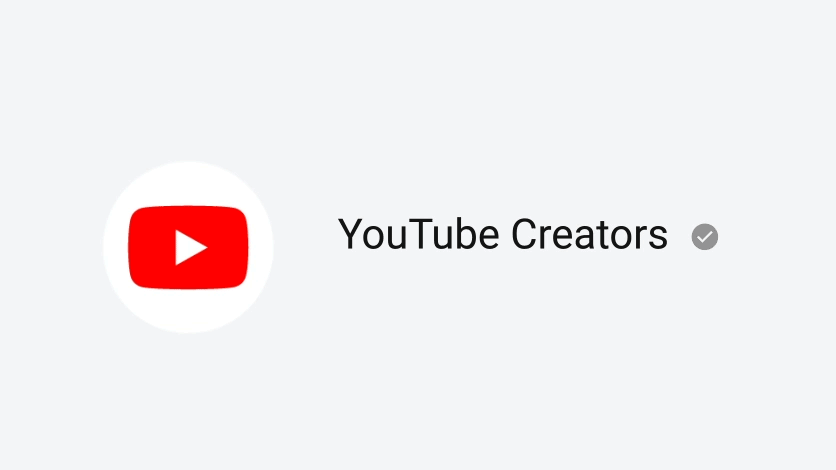YouTube is overhauling its system for user verification. The company says these policy changes, set to start next month, will stop using subscription numbers to determine verification. YouTube will instead verify “prominent channels that have a clear need for proof of authenticity.”
“Through our research, we found that viewers often associated the checkmark with an endorsement of content, not identity,” Wrote Jonathan McPhie, a YouTube product manager, in a blog post announcing these changes.
UPDATE: YouTube has reversed this decision
This is a fear other social platforms have faced, in part because they have turned verification into an endorsement. By making it elusive, and subjective verification turns into exactly what these platforms say they do not want. I wrote about this problem for Twitter last year.
My take is that platforms should expand verification as much as possible. In doing so they would remove the perspective that a platform verifying identity equates to an endorsement of that entity. Doing this, I suspect would also reduce spam on the platform massively. As I said in the VentureBeat post:
“Sure, open verification would cause problems for real public figures. For example, Dwayne Johnson isn’t the only person with that first and last name. I get it, the only other Mason Pelt I know of is a convicted felon in Florida, so I can see how a blue checkmark account with the same first and last name using one of our photos instead of theirs could be a problem and could cause media confusion.”
Fictional scenario where “The Rock” and I share a problem aside. The changes causing a lot of backlash, as they are not just taking effect going forward. YouTube will also be removing verification from a great many people, as currently, every channel with 100,000 subscribers was eligible for verification.
The email notices sent to creators that they will soon be losing their verified statuses caused a lot of upset on Twitter. Even, Michael Buckley, one of the early YouTube creators, who was on an episode of 20/20 (back in 2010) as one of the first people who were earning a living from YouTube got the email that he will be losing his verification.

“No one lost a verification badge today–If you received an email that your channel will no longer be verified, this was just an advanced notice & you can appeal [.] The checkmark has never appeared on YouTube mobile channel pages (this will be added soon)” YouTube tweeted
YouTube claimed in another tweet that “the old way didn’t “verify” much except that a channel had 100k subs. This change makes verification more helpful, by looking at authenticity”
Related: YouTube Ending Targeted Ads On Videos Aimed At Kids
However, as we’ve seen time and time again, people with large audiences are rarely the victims of impersonators. The creators will be impersonated and their audience will be the victims. Scams where someone purporting to be a YouTuber messages, comments or otherwise reaches out to that YouTubers subscribers, asking them to click on a link and claim a prize are common.
This kind of scam was widely reported in 2018, but according to Security firm RiskIQ these phishing attempts go back to at least 2016. I’ve personally seen this on Twitter within the last few days. YouTube says, the new design should help as it is “more difficult to replicate than the checkmark.” and that creators commenting on their own videos will still have their name highlighted”
The new verification badge is harder to replicate, and it is notable. However, I still think using a system, that verifies name or business name, based on documents. Along with a few simple monitoring tools to prevent, celebrity impersonation, would be far better.
Header Image: YouTube
Mason Pelt, is a guest author for Internet News Flash. He’s been a staff writer for SiliconANGLE and has written for TechCrunch, VentureBeat, Social Media Today and more.
He’s a Managing Director of Push ROI, and he acted as an informal adviser when building the first Internet News Flash website. Ask him why you shouldn’t work with Spring Free EV.

Comments are closed, but trackbacks and pingbacks are open.